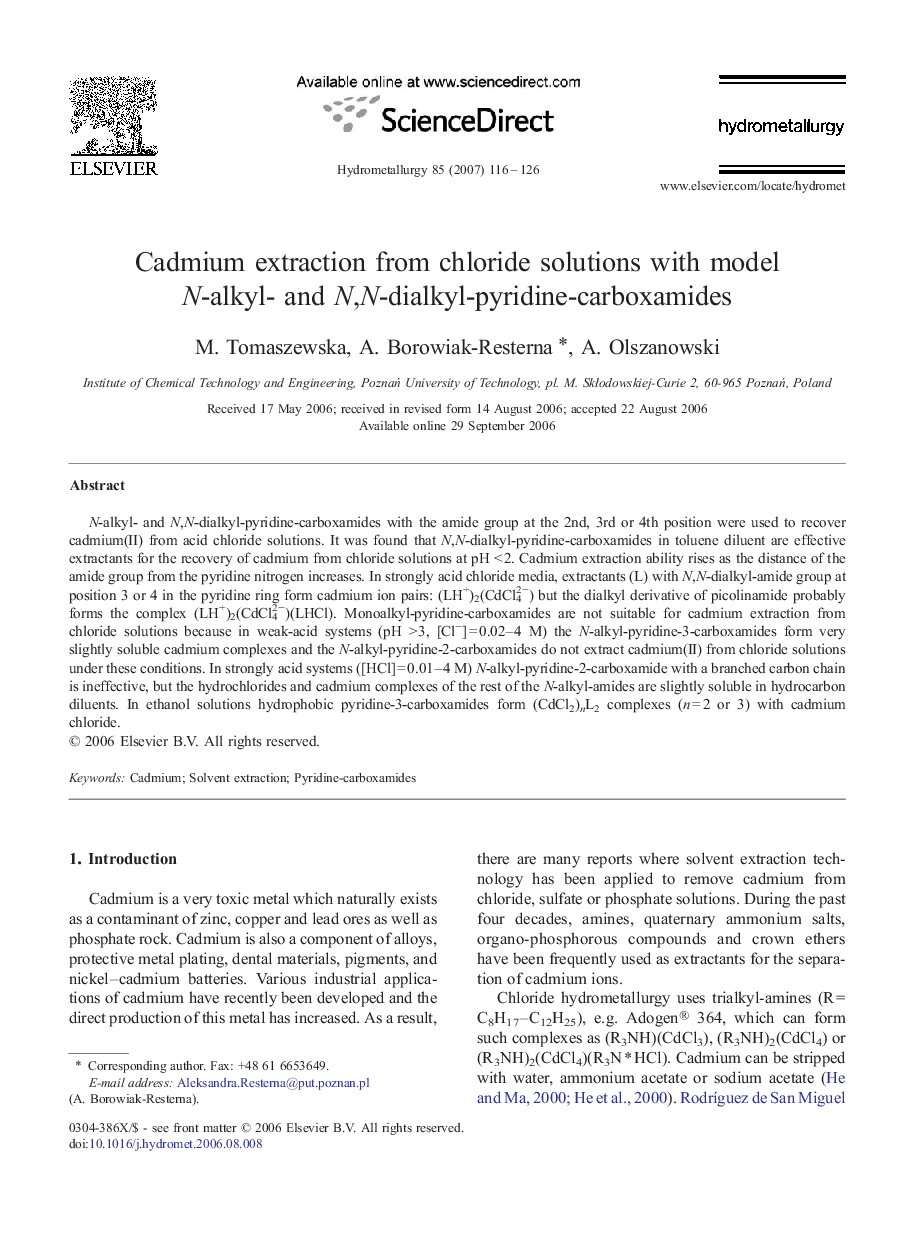| Article ID | Journal | Published Year | Pages | File Type |
|---|---|---|---|---|
| 213566 | Hydrometallurgy | 2007 | 11 Pages |
N-alkyl- and N,N-dialkyl-pyridine-carboxamides with the amide group at the 2nd, 3rd or 4th position were used to recover cadmium(II) from acid chloride solutions. It was found that N,N-dialkyl-pyridine-carboxamides in toluene diluent are effective extractants for the recovery of cadmium from chloride solutions at pH < 2. Cadmium extraction ability rises as the distance of the amide group from the pyridine nitrogen increases. In strongly acid chloride media, extractants (L) with N,N-dialkyl-amide group at position 3 or 4 in the pyridine ring form cadmium ion pairs: (LH+)2(CdCl42−) but the dialkyl derivative of picolinamide probably forms the complex (LH+)2(CdCl42−)(LHCl). Monoalkyl-pyridine-carboxamides are not suitable for cadmium extraction from chloride solutions because in weak-acid systems (pH > 3, [Cl−] = 0.02–4 M) the N-alkyl-pyridine-3-carboxamides form very slightly soluble cadmium complexes and the N-alkyl-pyridine-2-carboxamides do not extract cadmium(II) from chloride solutions under these conditions. In strongly acid systems ([HCl] = 0.01–4 M) N-alkyl-pyridine-2-carboxamide with a branched carbon chain is ineffective, but the hydrochlorides and cadmium complexes of the rest of the N-alkyl-amides are slightly soluble in hydrocarbon diluents. In ethanol solutions hydrophobic pyridine-3-carboxamides form (CdCl2)nL2 complexes (n = 2 or 3) with cadmium chloride.
